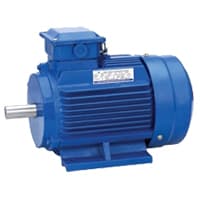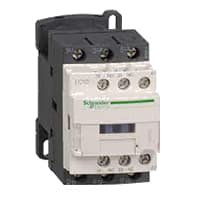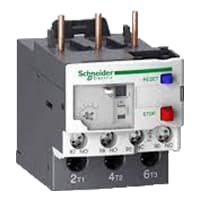3 phase motor forward reverse wiring:
This Diagram shows 3 phase motor forward reverses wiring diagram. This circuit diagram is very simple and easy to make. If you want to know more details about this circuit please check our youtube video below the post. Please stay with our website for more updates about electrical electronics and robotics projects gadgets and circuits.
Advertisements
Components needed For this Project:
You can get the components from any of the sites below:
- 3 Phase Motor (5 HP) [See Buy Click Amazon]
- Magnetic Contactor 40A [See Buy Click Amazon]
- Motor Protector Overload [See Buy Click Amazon]
*Please note: These are affiliate links. I may make a commission if you buy the components through these links. I would appreciate your support in this way!
Advertisements
Components used to make the 3 phase motor forward reverse wiring:
A 3-phase electric motor uses a 3-phase Power Supply to Convert Electric Energy into Mechanical Energy. It contains four Wires (Three hot Wires and one Neutral Wire) and Uses 3 Alternating Currents of the Same Frequency. Since it Generates a Rotating Magnetic Field, it does not need a Capacitor for the Startup. Some 3-phase Motors are Reversible, Which Means they can serve as Generators by Turning Mechanical Energy into Electrical Energy.
02. Magnetic Contactor:
A magnetic contactor is an electromagnetic switching device. It is generally used for controlling 3-phase Motors. The operation of a magnetic contactor is similar to that of a Relay. but a relay is used for low-power or low-voltage connections, and a magnetic contactor is used for high-power or high-voltage connections. As soon as the supply is applied to the magnetic contactor coil. its normally open contacts are closed and normally closed contacts are opened and the associated devices are also operated. This is how a magnetic contactor works.
Overload Protection is Protection Against a Running Overcurrent That Would Cause Overheating of The Protected Equipment. Hence, An Overload is Also a Type of Overcurrent flow. Overload Protection Typically Operates on an Inverse Time curve where the Tripping Time Becomes less as the Current Increases. This Overload Protector is an Essential Component for Many Sockets Power Systems. The Top-Quality Overload Protector can Effectively Protect Electrical Products from Power Surges.
Thank You for visiting the website. Keep visiting for more Updates.
Frequently asked questions
Both forward and reverse operations of a 3-phase induction motor are important for controlling the direction of mechanical motion in various industrial and commercial applications.
The direction of rotation of a 3-phase induction motor could be reversed by interchanging any two of the 3 motor supply lines. Such that the field rotates counterclockwise rather than clockwise.
In order to reverse the direction of an AC motor pump, the magnetic fields must be altered to provoke movement in the opposite direction. Since each wire consists of a positive and negative current flow within the magnetic fields, the flip-flopping of the main and starter wires causes the motor to run in reverse rotation.
To reverse it we need to change the direction of the rotating of the magnetic field produced by the main and starter windings. This would be accomplished by reversing the polarity of the starter of the winding. Basically, we need to swap the connections on either end of the starter of the winding.
Mechanical Load, In some cases, a heavy mechanical load and high friction on the motor's shaft could cause it to rotate in the reverse direction. This can happen if the load overpowers the motor's starting torque or if there is insufficient mechanical resistance to prevent reverse rotation.
Read more Single Phase Wiring
What is a kilowatt-hour (kWh) | kwh formula | What does kwh mean
Introduction to Electrical Units and CircuitskW and kWh on your electricity bill As your home uses electricity during...
What is the Difference Between kVA | What does KVA mean | kVA formula
Difference Between KVA ExplainedWhat does KVA Mean? There are technical terms aplenty when it comes to generators, and...
Power Factor | Power Unit | Energy | Electricity Unit
Power factor definition | Calculating Power FactorPower Factor Values In a purely resistive circuit, the power factor...




0 Comments